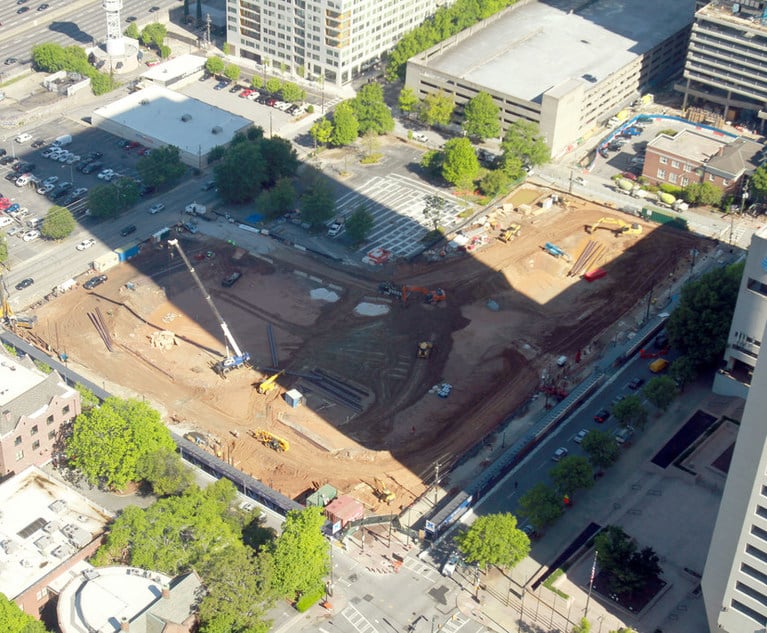 Katherine Vaccaro, left, and Brielle Brown, right, of Manko, Gold, Katcher & Fox. Courtesy photos
Katherine Vaccaro, left, and Brielle Brown, right, of Manko, Gold, Katcher & Fox. Courtesy photos Environmental Justice: Past, Present and Future
One of the most significant policy developments to emerge in recent years is the concept of environmental justice or "EJ." Indeed, we have been knee-deep in EJ policies, legislation, and regulations at the federal, state, and local levels.
November 01, 2024 at 11:49 AM
6 minute read
Part of our job as environmental lawyers is to immerse ourselves in the details of environmental policies affecting our clients. One of the most significant policy developments to emerge in recent years is the concept of environmental justice or "EJ." Indeed, we have been knee-deep in EJ policies, legislation, and regulations at the federal, state, and local levels. We regularly throw around the term "EJ," assuming it's colloquial now—but that's not totally accurate. In this article, we take a look at the concept of EJ through a wider-angle lens, beginning with its history and then discussing some of its current real-world implications for environmental practitioners and regulated facilities.
To start, the notion of environmental justice is not new. It began to take shape between the late 1970s and the early 1990s, after several incidents sparked interest in the environmental and health burdens facing certain minority and low-income communities. Notably, residents of Shocco Township, Warren County, North Carolina, protested the state's selection of the township for a landfill to dispose of 30,000 gallons of polychlorinated biphenyl (PCB) contaminated soil that had been dumped along North Carolina roadways. At the time, Shocco Township was 75% Black, and Warren County was ranked 97th in per capita income out of 100 counties in the state. About a decade later, a group of neighbors in the Black community of Norco, Louisiana, demanded that residents of an area with over 100 petrochemical facilities be offered the opportunity to relocate, and eventually Shell Corp. agreed. There are other examples like these.
NOT FOR REPRINT
© 2025 ALM Global, LLC, All Rights Reserved. Request academic re-use from www.copyright.com. All other uses, submit a request to [email protected]. For more information visit Asset & Logo Licensing.
You Might Like
View All
Over 700 Residents Near 2023 Derailment Sue Norfolk for More Damages
3 minute read
Neighboring States Have Either Passed or Proposed Climate Superfund Laws—Is Pennsylvania Next?
7 minute read
No Pa. Case Has Ever Adjudicated a Claim to Enforce an Environmental Covenant Imposed Under 'Act 2'—Does That Matter?
7 minute read
Trending Stories
- 1From Hospital Bed to Legal Insights: Lessons in Life, Law, and Lawyering
- 2‘Diminishing Returns’: Is the Superstar Supreme Court Lawyer Overvalued?
- 3LinkedIn Accused of Sharing LinkedIn Learning Video Data With Meta
- 4Delaware Supreme Court Agrees Insurance Dispute Can Be Retried
- 5New Strategies For Estate, Legacy Planning
Who Got The Work
J. Brugh Lower of Gibbons has entered an appearance for industrial equipment supplier Devco Corporation in a pending trademark infringement lawsuit. The suit, accusing the defendant of selling knock-off Graco products, was filed Dec. 18 in New Jersey District Court by Rivkin Radler on behalf of Graco Inc. and Graco Minnesota. The case, assigned to U.S. District Judge Zahid N. Quraishi, is 3:24-cv-11294, Graco Inc. et al v. Devco Corporation.
Who Got The Work
Rebecca Maller-Stein and Kent A. Yalowitz of Arnold & Porter Kaye Scholer have entered their appearances for Hanaco Venture Capital and its executives, Lior Prosor and David Frankel, in a pending securities lawsuit. The action, filed on Dec. 24 in New York Southern District Court by Zell, Aron & Co. on behalf of Goldeneye Advisors, accuses the defendants of negligently and fraudulently managing the plaintiff's $1 million investment. The case, assigned to U.S. District Judge Vernon S. Broderick, is 1:24-cv-09918, Goldeneye Advisors, LLC v. Hanaco Venture Capital, Ltd. et al.
Who Got The Work
Attorneys from A&O Shearman has stepped in as defense counsel for Toronto-Dominion Bank and other defendants in a pending securities class action. The suit, filed Dec. 11 in New York Southern District Court by Bleichmar Fonti & Auld, accuses the defendants of concealing the bank's 'pervasive' deficiencies in regards to its compliance with the Bank Secrecy Act and the quality of its anti-money laundering controls. The case, assigned to U.S. District Judge Arun Subramanian, is 1:24-cv-09445, Gonzalez v. The Toronto-Dominion Bank et al.
Who Got The Work
Crown Castle International, a Pennsylvania company providing shared communications infrastructure, has turned to Luke D. Wolf of Gordon Rees Scully Mansukhani to fend off a pending breach-of-contract lawsuit. The court action, filed Nov. 25 in Michigan Eastern District Court by Hooper Hathaway PC on behalf of The Town Residences LLC, accuses Crown Castle of failing to transfer approximately $30,000 in utility payments from T-Mobile in breach of a roof-top lease and assignment agreement. The case, assigned to U.S. District Judge Susan K. Declercq, is 2:24-cv-13131, The Town Residences LLC v. T-Mobile US, Inc. et al.
Who Got The Work
Wilfred P. Coronato and Daniel M. Schwartz of McCarter & English have stepped in as defense counsel to Electrolux Home Products Inc. in a pending product liability lawsuit. The court action, filed Nov. 26 in New York Eastern District Court by Poulos Lopiccolo PC and Nagel Rice LLP on behalf of David Stern, alleges that the defendant's refrigerators’ drawers and shelving repeatedly break and fall apart within months after purchase. The case, assigned to U.S. District Judge Joan M. Azrack, is 2:24-cv-08204, Stern v. Electrolux Home Products, Inc.
Featured Firms
Law Offices of Gary Martin Hays & Associates, P.C.
(470) 294-1674
Law Offices of Mark E. Salomone
(857) 444-6468
Smith & Hassler
(713) 739-1250





